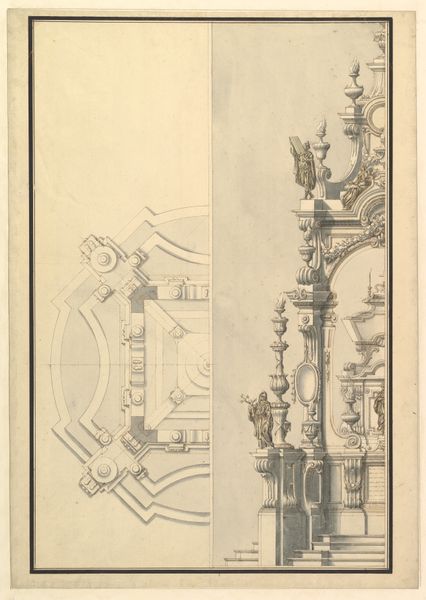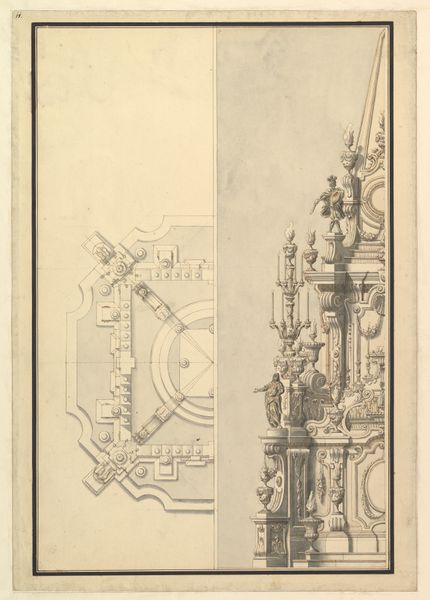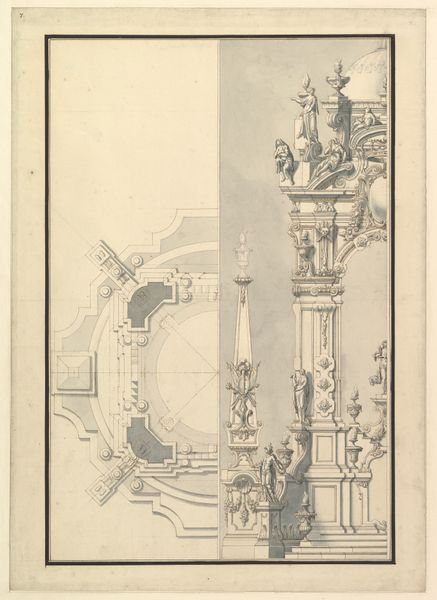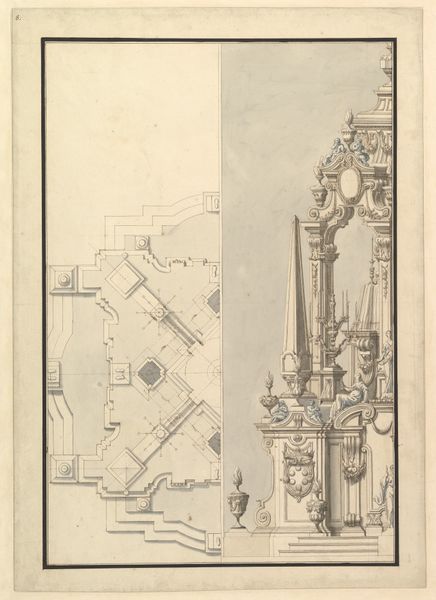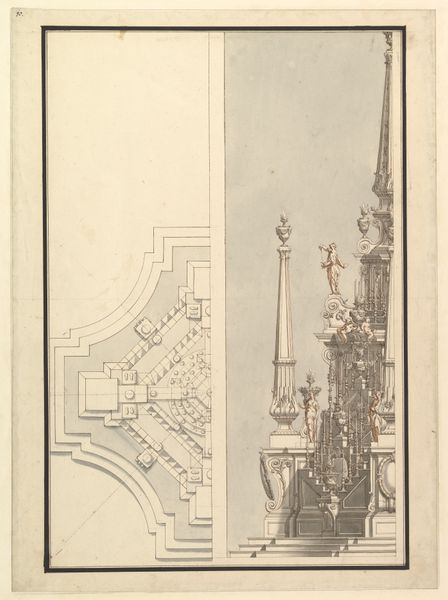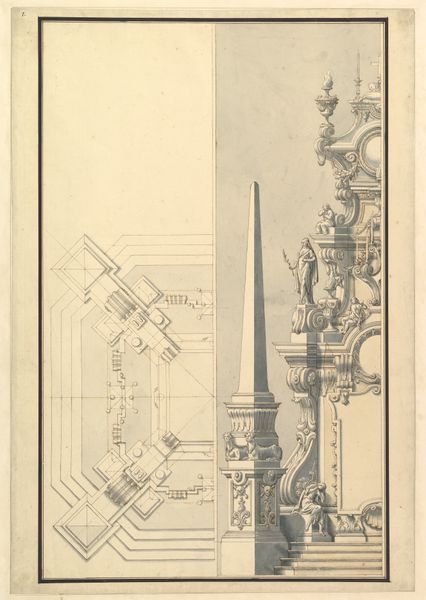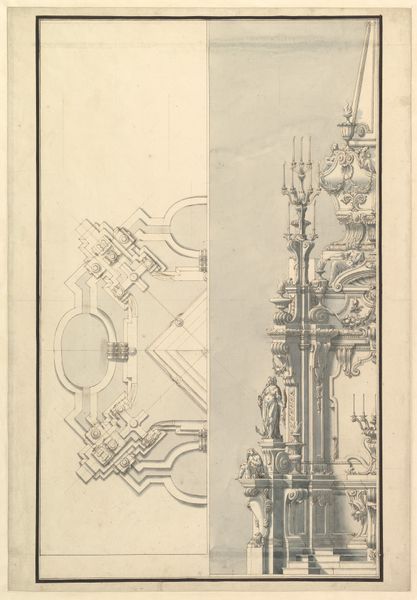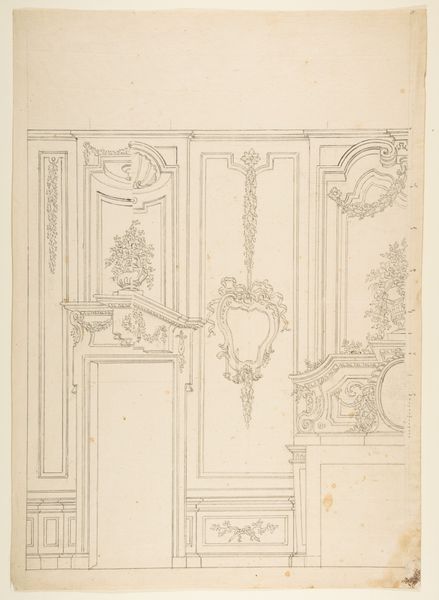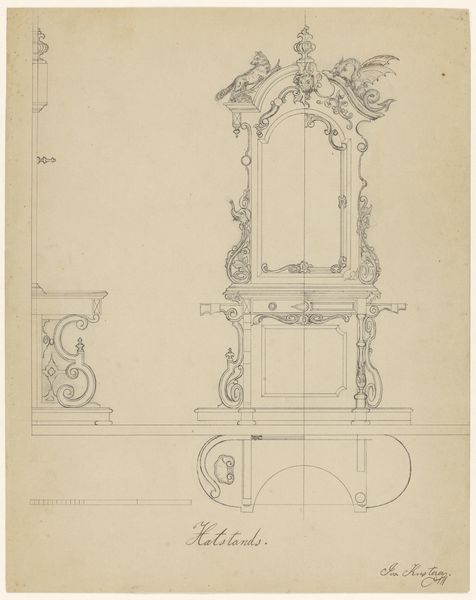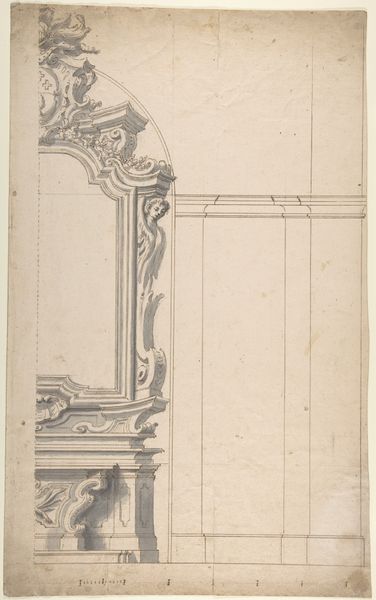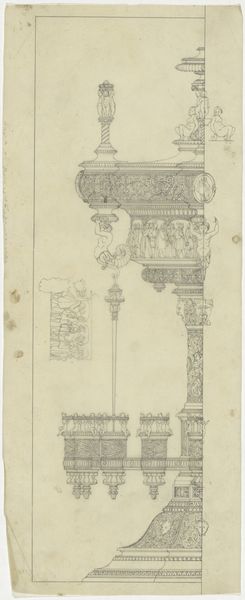
Half Elevation and Half Ground Plan for Catafalque for Antonio Farnese, Duke of Parma (d. 1731) 1726 - 1736
0:00
0:00
drawing, print, architecture
#
drawing
#
baroque
# print
#
form
#
geometric
#
line
#
history-painting
#
architecture
Dimensions: 20-1/16 x 13-5/8 in. (51.0 x 34.6 cm)
Copyright: Public Domain
Editor: This work is entitled "Half Elevation and Half Ground Plan for Catafalque for Antonio Farnese, Duke of Parma," dating to the 1720s or 30s, created by Giuseppe Galli Bibiena. It combines print and drawing techniques. The precision is striking; it almost feels more like an architectural blueprint than a piece of art. What strikes you about this image? Curator: Immediately, I'm drawn to the labor inherent in its production. Think of the workshops involved: the draughtsmen, the engravers, the paper-makers. This wasn't just about commemorating a Duke, but about solidifying power structures. We see the materials – ink, paper – acting as vehicles for social and political ambitions. The very act of creating such an elaborate catafalque speaks volumes about Baroque sensibilities and conspicuous consumption, don’t you think? Editor: That makes perfect sense. I hadn't thought about the process as a reflection of broader social structures. But the fact that it's presented as both elevation and ground plan is interesting too, it's almost like displaying different levels of understanding. Curator: Precisely. It challenges a straightforward viewing experience. The artist shows us both the aesthetic surface and the underlying construction, forcing a consideration of the "how" as much as the "what." Think of the waste generated! Consider too, the societal function: a stage for grief and the theatre of power. It begs the question, where does "art" truly reside here – in the object, or in the performance it enables? Editor: So, seeing the drawing this way… It’s not just about aesthetic appreciation or even historical context; it's also about the material reality and labor that underpin these grand displays. Curator: Exactly. The Baroque may seem decadent, but viewing pieces like these through a materialist lens forces us to confront how societies used material things to uphold systems of control and meaning. Editor: That's really reframed my thinking on this! It gives it a real-world grounding I hadn't quite seen before. Curator: Glad to hear that, focusing on materiality always reveals the hard work that produced it and broader truths, hidden under the guise of the finished work.
Comments
No comments
Be the first to comment and join the conversation on the ultimate creative platform.
